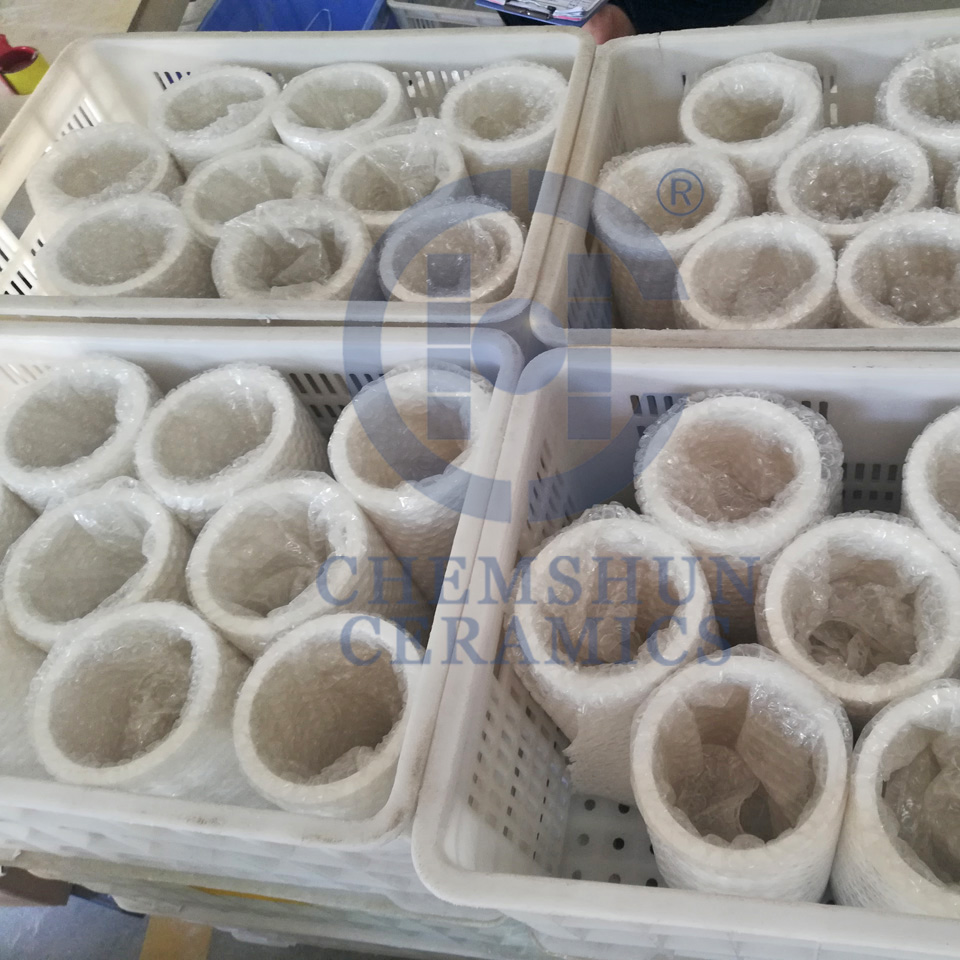Top articles
- High-purity 99.7% alumina ceramics helpful to semiconductor manufacturing technology
- Alumina Ceramic Grinding Balls: High-Efficiency Solutions for Industrial Grinding
- How to Select Suitable Wear-Resistant Ceramic Lining Tiles in the Mining Industry
- Advantages of Ceramic Rubber Composite Liners in Industrial Applications
- How to Install Alumina Ceramic Liners for Long-Lasting Adhesion?
- 99% alumina bulletproof ceramics are the preferred materials for protective devices
- Alumina Ceramic Substrates:Characteristics,Advantages,Disadvantages,and Applications
- Why do alumina industrial ceramics wear out?
- The reason of abrasion resistant ceramic tiles falling off when pasted on equipment
- Seven aspects of advantages & applications of alumina ceramic substrates
Latest articles
- High-purity 99.7% alumina ceramics helpful to semiconductor manufacturing technology
- Alumina Ceramic Grinding Balls: High-Efficiency Solutions for Industrial Grinding
- How to Select Suitable Wear-Resistant Ceramic Lining Tiles in the Mining Industry
- Advantages of Ceramic Rubber Composite Liners in Industrial Applications
- How to Install Alumina Ceramic Liners for Long-Lasting Adhesion?
- Welcome to EXPOMIN 2025
- 99% alumina bulletproof ceramics are the preferred materials for protective devices
- Alumina Ceramic Substrates:Characteristics,Advantages,Disadvantages,and Applications
- Why do alumina industrial ceramics wear out?
- Chemshun Ceramics Chinese New Year Holiday Notice
Your browsing history

What is ceramic lined pipes
Wear-resistant ceramic pipes are widely used in many industrial fields such as lithium battery industry, thermal power plants, cement plants and other industrial fields because of their high hardness, high wear resistance, corrosion resistance, high temperature resistance and metal isolation. What is wear resistant ceramic lined pipes, What are the characteristics of each? Different classification standards will have different classification results. For example, from the classification of raw materials of pipes, we can divide them into alumina ceramic pipes, silicon carbide ceramic pipes, etc.; Tubes, etc. Today we classify and conduct research on the fixing method of ceramic tubes and wear-resistant ceramics
According to the fixing method of wear-resistant ceramics, Chemshun Ceramics manufacturer divide pipe into three types: patch-type wear-resistant ceramic pipes, stud-welded wear-resistant ceramic pipes and sleeve-type wear-resistant ceramic pipes.
1.Pieces ceramic tiles lined pipeline: This pipeline is made of high-temperature-resistant strong adhesive to paste alumina or zirconia wear-resistant ceramic sheets on the inner wall of the pipeline, and then heat and solidify to form a firm anti-wear layer.
Features: Simple installation, easy to replace, and different ceramic sheets can be selected according to the wear conditions of different parts of the pipeline, which can reduce the cost as much as possible while ensuring the performance of the pipeline. Although pieces lined ceramic pipes have many advantages, their disadvantages are also obvious. The fixation of ceramics depends entirely on ceramic adhesives. Once the viscosity of the adhesives decreases or disappears in extreme environments such as high temperature, the ceramics are prone to fall off. Therefore, it is necessary to pay attention to the use temperature or choose high temperature resistant ceramic adhesive.
2. Stud welding type wear-resistant ceramic pipeline: This pipeline is to stick wear-resistant ceramics on the inner wall of the pipeline with strong adhesive, and at the same time cooperate with the spot welding process to firmly weld the ceramic lining plate to the inner wall of the steel pipe through small holes. To protect the solder joints, a ceramic cap is also screwed on.
Features: Reliable fixation, high temperature resistance, and can operate normally in a high temperature environment of 500 °C.
3. Casing type wear-resistant ceramic pipe: The pipe is measured in advance for the size of the steel pipe, then sintered as a whole, and installed and fixed by the method of being sleeved inside the steel pipe.
Features: There are few connection gaps and the inner wall is smooth, which avoids material hanging and material leakage, and is generally suitable for pipes with special needs.









